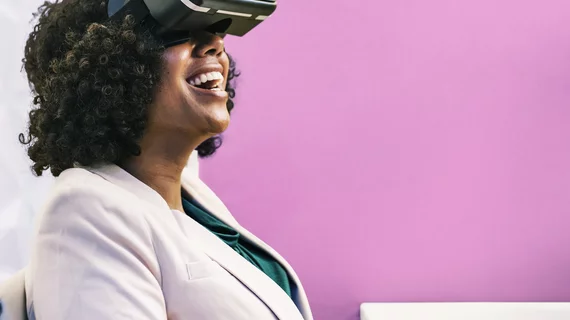VR ‘transforms’ cardiovascular care—but still room for improvement
In a review paper published June 25 in JACC: Basic to Translational Science, a group of researchers highlighted the growing list of applications for virtual reality in cardiovascular medicine.
These technologies can be used to educate patients, their families and medical students about cardiac anatomy, facilitate pre-procedural planning and intraprocedural visualization, and serve as a rehabilitation tool for stroke survivors to regain arm mobility.
“For years, virtual reality technology promised the ability for physicians to move beyond 2D screens in order to understand organ anatomy noninvasively,” lead author Jennifer N.A. Silva, MD, assistant professor of pediatrics and cardiology at Washington University School of Medicine in St. Louis, said in a press release.
“However, bulky equipment and low-quality virtual images hindered these developments. Led by the mobile device industry, recent hardware and software developments—such as head mounted displays and advances in display systems—have enabled new classes of 3D platforms that are transforming clinical cardiology.”
The spectrum of extended reality ranges from augmented reality, in which 2D or 3D images can be placed in a user’s native environment, to the totally immersive experience of virtual reality. In between are two newer classes of extended reality, according to the authors: merged reality (MeR) and mixed reality (MxR).
“Both approaches achieve a similar experience: to allow for interaction with digital objects while preserving a sense of presence within the true physical environment,” the researchers explained. “MeR captures a user’s surroundings and re-projects them onto on a VR-class (head mounted display), which can mediate the environment up or down as desired.
“MxR accomplishes a similar experience by projecting digital objects onto a semitransparent display. As such, the MxR platforms do not obscure, or mediate, the physical environment, allowing the wearer to maintain situational awareness of their surroundings as well as maintain normal interactions with those not participating in the MxR experience.”
This dual capability of MxR allows for its use during procedures because clinicians can maintain their normal interactions with people not participating in the MxR.
However, the authors pointed out barriers still must be overcome before these technologies are used more widely in managing and treating cardiovascular disease.
“These technologies are still constrained due to cost, size, weight and power to achieve the highest visual quality, mobility, processing speed and interactivity,” Silva said. “Every design decision to mitigate these challenges affects applicability for use in each procedural environment.”
Limitations aside, continued software and hardware advances will ultimately lead to higher-value care, Silva and colleagues predicted.
“These devices have the potential to provide physicians with a sterile interface that allows them to control 3D images,” they wrote. “Early data show that this improved visualization will allow the physician to learn more quickly, interpret images more accurately, and accomplish interventions in less time. These improvements in physician performance based on better information will most likely translate into lower-cost procedures and better outcomes for patients.”

